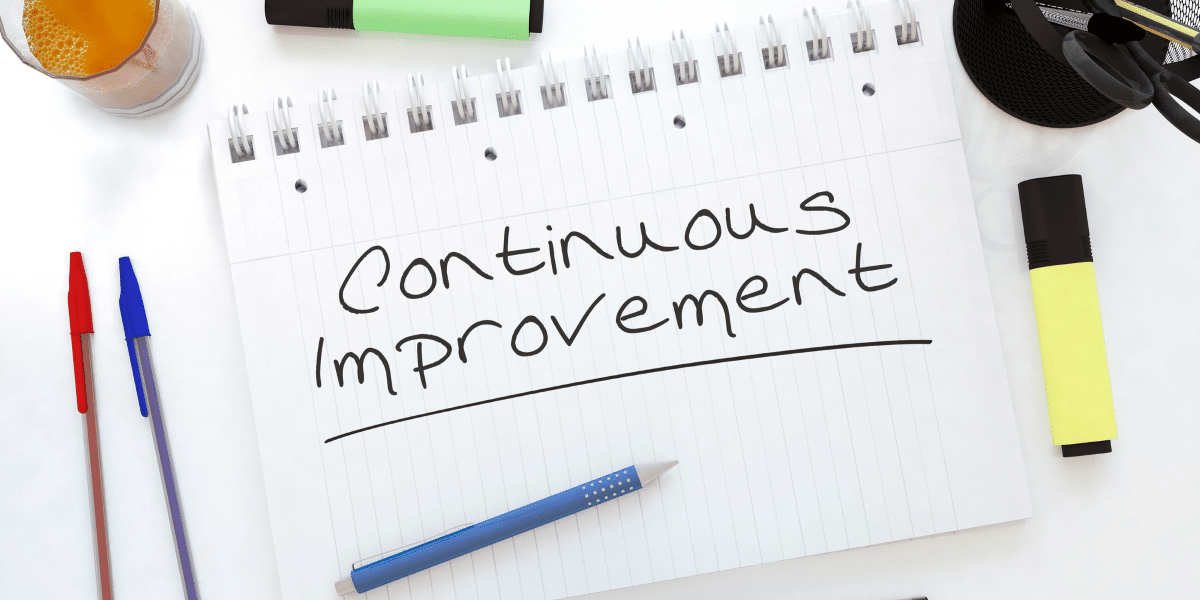Imagine supercharging your success through the implementation of Kaizen principles for continuous improvement. Discover how this powerful idea can help you unlock the secrets to sustainable growth and excellence. What if you could make significant progress with small, easy daily steps to perfection? We have you covered – simply dive into our guide and master the core principles of Kaizen that can propel you to success in every area of your life or business.
Understanding Kaizen Principles
Kaizen Principles Explained
Kaizen is a philosophy initially rooted in the Japanese culture that emphasizes continuous improvement. “Kaizen” means “change for the better” and focuses on enhancing processes, eliminating waste, and refining quality. Organizations implementing Kaizen principles can induce incremental improvements to achieve breakthrough advancements over time.
The integration of these principles means an organization acknowledges that it needs to create a culture of continuous improvement. This entails encouraging employees at all levels in the organization to be involved in identifying opportunities for improvement and suggesting and taking action on ideas for small but impactful improvements. By enabling employees working on the frontline of the processes to suggest improvements, companies can capture the collective intelligence of their workforce to drive progress.
Application in Various Industries
The principles have been applied in numerous industries, including the manufacturing, healthcare, and service sectors, to name just a few. In manufacturing, organizations utilize Kaizen methodologies to refine and improve their production processes and continuously enhance the quality of their products. In healthcare, where streamlining workflows and reducing errors are crucial to improving patient care delivery, more healthcare organizations are adopting Kaizen to help them achieve these transformative breakthroughs.
Key Elements of Kaizen
Teamwork: This is essential for promoting collaboration and contributing to small incremental improvements. The idea of the latter is to ensure that everyone involved in the company, from the assembly line to the sales floor, believes they have the power and the responsibility to improve processes.
Discipline: Means creating and implementing small incremental changes to systems or processes that improve them and solve problems. This rests on two principles: using structured activities to solve the issues and mentoring employees who are learning new processes.
Small incremental improvements: Instead of making significant changes, small ones can be broken down into a more manageable course of action. Companies and those involved are also required to work within the means they are given.
Implementing Kaizen for Continuous Improvement
Leadership commitment: Strong backing from management is key in seeing this initiative through. One of the reasons Toyota had such success wasn’t just the model they created, but after it was adopted, company leaders never let up.
5 Elements of Kaizen
Teamwork
Kaizen thrives in a setting where employees work together to identify and make improvements. It encourages all employees to give input regardless of their position, and because of this, critiques of the process argue that it is less management-driven. Instead, everyone from the head honchos to the frontline workers is working towards a common goal. Goal achievement, whether it’s in the boardroom or on the shop floor, requires the insight and experience of every person in that operation. So, collaboration in Kaizen can lead to unity among the team members.
Personal Discipline
It calls for strict adherence to SOP’s, yet is always seeking improvement. “The Standard ” calls for the best and personal discipline requires we keep our focus there all the time. The nature or our competitive business environment requires that each of us be self-motivated. And progress itself demands that we continually experiment and search for innovation. Without personal discipline, none of that will happen.
Advantages and Disadvantages of Kaizen
Pros of Kaizen
One of the key advantages of the approach is that productivity increases. Over time, making small changes allows you to be more efficient with your time and your resources. There is also the added benefit of learning to think outside the box. This promotes creative problem-solving and out-of-the-box solutions (unlike machines, people can be creative and innovative). However, what might be most attractive about this Six Sigma approach is the fact that it occurs at all levels of the organization, and everyone takes part. As such, it minimizes the size and cost of project scope.
Reduced waste
One disadvantage of adopting Kaizen pertains to the potential resistance to change among employees accustomed to the status quo. The time it takes to implement the methodology can be a con for organizations operating on tight deadlines or with only a few resources at their disposal. The risk of an organization becoming myopic and focusing so much on incremental change to the detriment of larger strategic shifts is another con to Kaizen. This type of environment can create instances where significant issues are not addressed, as they go unnoticed due to the emphasis on small improvements rather than significant transformations.
Empowering Employees for Success
Empowerment of employees involves giving them the discretion and the independence to contribute their insights – and then carrying through based upon their decisions. When employees are empowered, they feel more obliged to submit ingenious solutions and take responsibility for implementing changes.
In an empowered environment, there is an air of trust and collaboration, both of which come about because there is an understanding of the overall intent of the operation from both the workers and management. This approach nurtures creativity, drives morale, and leads to far higher levels of involvement among the workforce.
Summary
You’ve acquired knowledge about the world of Kaizen, understanding its core principles, dispelling myths about this business strategy, learning the various advantages and disadvantages of this approach in the workplace and delving into how Kaizen plays out in Six Sigma, lean and service environments. You’ve also worked through The 5 Elements of Kaizen, what Kaizen Events look like in the real world and why continuous improvement is so transformative for organizations. When you can get management to buy in and empower your employees to help drive the tools of Kaizen, that is when Kaizen can be genuinely successful within your organization.
Published by: Holy Minoza







